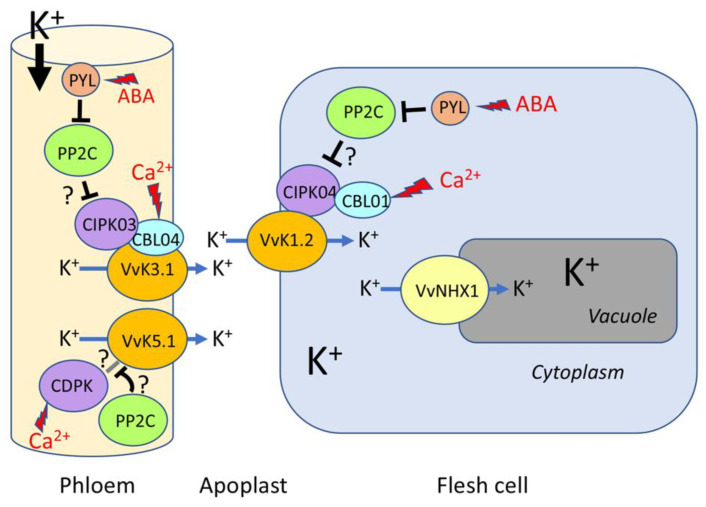Figure 2.
Schematic representation of known and expected K+ transport pathways in grape berries after the onset of ripening. K+ is delivered to berries via the phloem [15] and must cross the phloem plasma membrane barrier before accumulating in mesocarp cells [35]. This K+ flux to the apoplastic space involves the Shaker VvK3.1 channel. The activity of this channel can be enhanced by CIPK/CBL couples, possibly via an unusual mechanism of CBL anchoring in the plasma membrane [33]. Moreover, the depolarization-activated VvK5.1 channel present in phloem cells could control the plasma membrane potential [103]. By analogy with its GORK counterpart, VvK5.1 is expected to be modulated by CPKs [17]. Once in the apoplast, K+ is taken up by the flesh cells owing to the VvK1.2 Shaker channel [32], which recruits CIPK/CBL partners for its activation. CIPKs are also known to be inhibited by their interaction with PP2Cs of the ABA signaling pathway [17]. PP2Cs are, in an ABA-dependent manner, under the negative control of PYR/PYL/RCAR receptors. The VvNHX1 H+/K+ exchanger mediates K+ transfer to the vacuole, where this ion is accumulated [114].

